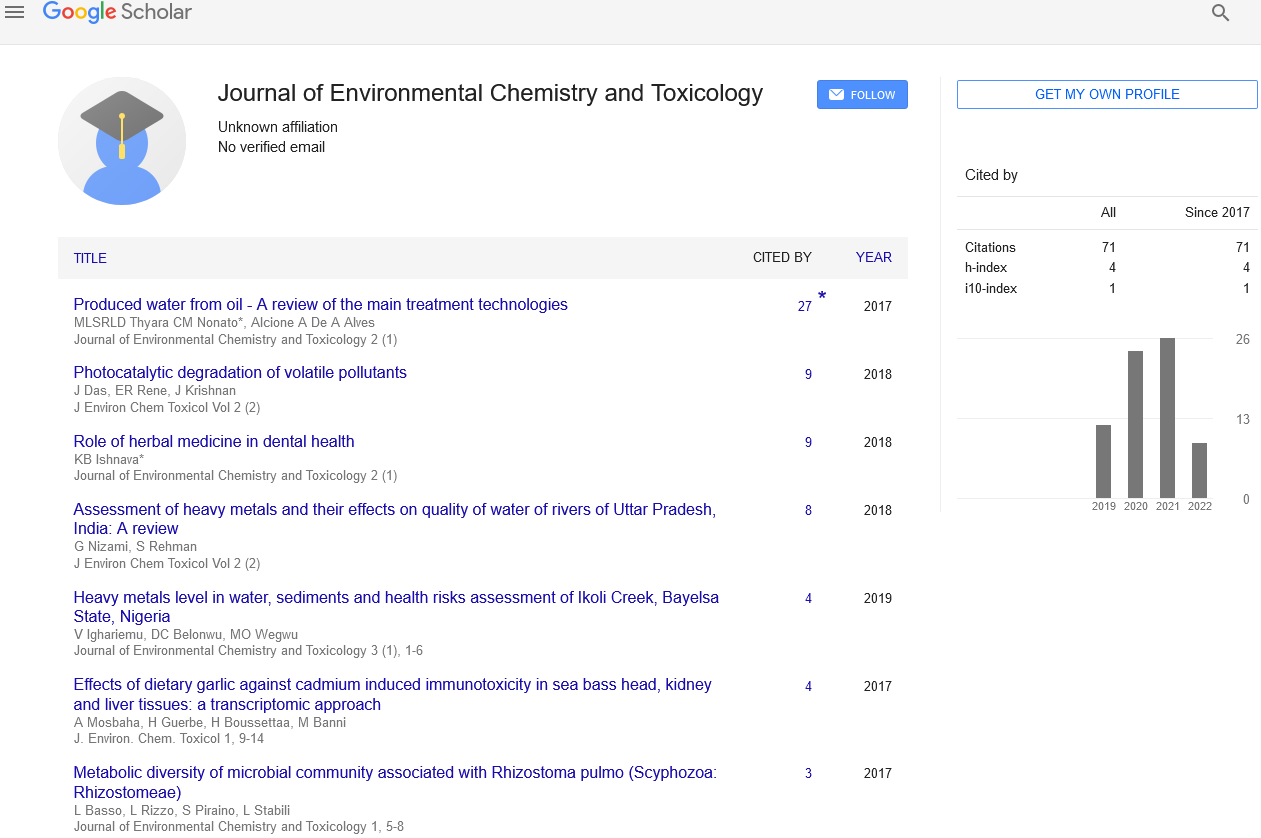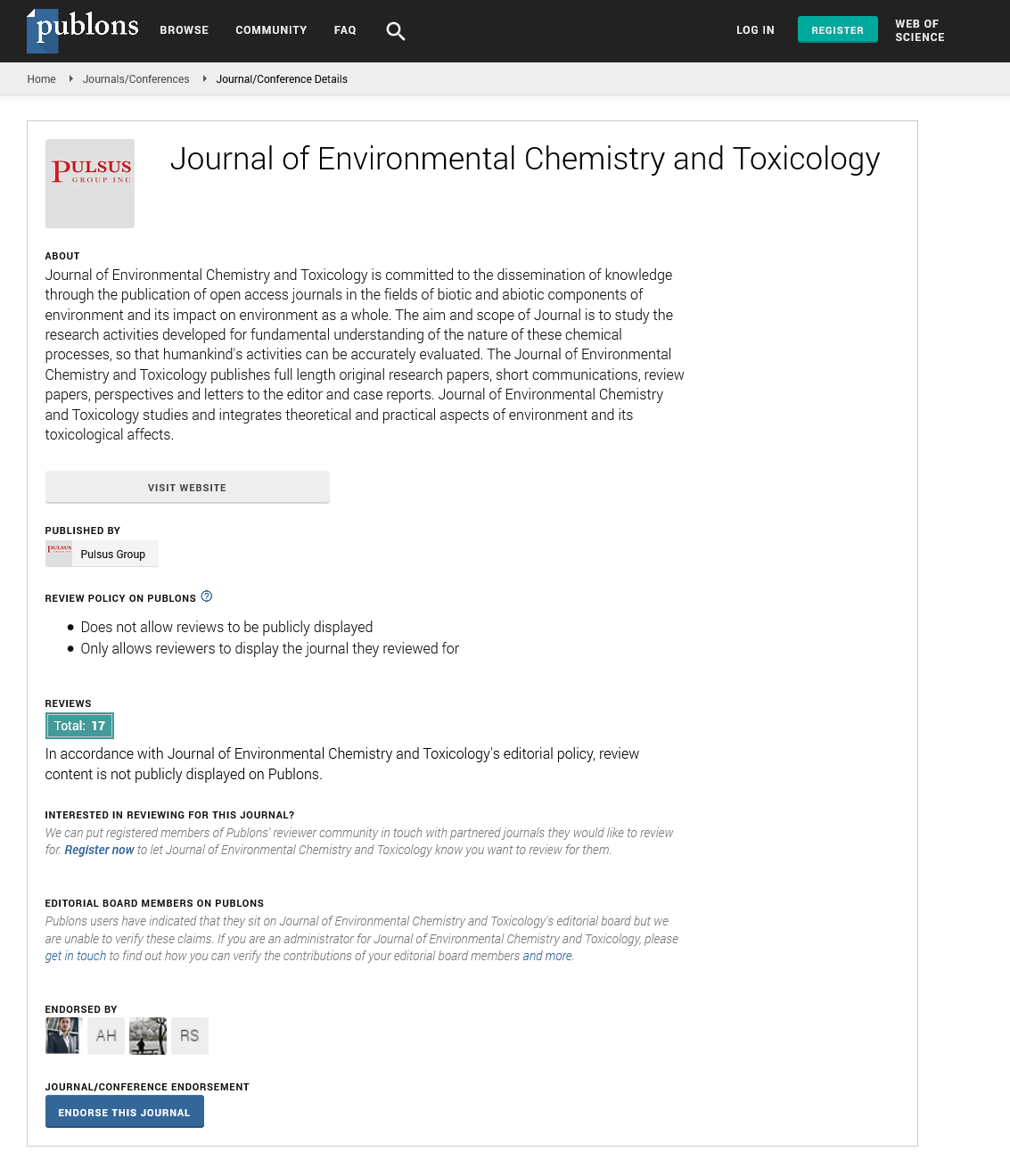Soil contamination
Received: 12-Aug-2017 Accepted Date: Aug 18, 2017; Published: 28-Aug-2017
Citation: Vacha R. Soil contamination. J Environ Chem Toxicol. 2017;1(1):1-1.
This open-access article is distributed under the terms of the Creative Commons Attribution Non-Commercial License (CC BY-NC) (http://creativecommons.org/licenses/by-nc/4.0/), which permits reuse, distribution and reproduction of the article, provided that the original work is properly cited and the reuse is restricted to noncommercial purposes. For commercial reuse, contact reprints@pulsus.com
The soil belongs to the non-renewable sources in the scale of human life time. The soil degradation seems to be more and more serious problem for the future when the number of Earth inhabitants will increase sharply and will reach even up to 10 billons in 2050. OECD data presume that agricultural land must increase form current 40% on 50% of total land area to 2030, the inputs of nutrients into soils must be 3 times higher in 2050, the use of mineral fertilizers will be necessary and the fight again soil degradation must be more intensive [1]. The food security depending on soil availability and fertility will be key factor for sustainable development of human society [2]. The soil contamination belongs to one of the most serious degradation threats that are defined in European “Toward Thematic Strategy for Soil Protection” [3]. The environmental contamination is problem actual worldwide; many contaminants were detected even in the ice of Antarctic area. Moreover, the soil is environment with “memory”, it means that contamination survives in the soil for many years. We can still analyse the load by elements and substances of anthropogenic origin from the period of “industrial revolution” in the soils or sediments [4]. While inorganic contaminants like potentially toxic elements (TEs) are natural part of the soils (minerals) and can be redistributed by anthropogenic activities in the environment, organic pollutants like persistent organic pollutants (POPs) are produced by anthropogenic activities predominantly. The soil contamination can cause many negative effects. The soil functions can be reduced, for example the decrease of microbial activity [5] will lead to humification processes reduction, the decrease of soil water retention capacity, the increase of soil erosion vulnerability, etc. The next negative effects are connected with animal and human exposure by toxic elements and substances entering food chains via transfer from root to shoot of agricultural crops or via surface contamination [6]. The direct human risks by inhalation, oral and dermal intake of contaminated soil particles can be relevant not only on urban soils [7].
The research on the field of soil contamination has long-term tradition in many countries around the World. The list of the most risky substances is extended still, especially of substances with anthropogenic origin, like persistent organic pollutants. The analytical tools are improving quickly. Many countries have their own tools for risk regulation based on scientific results, for example policy of soil protection and the methods of soil remediation [8]. The policy of soil protection is different in many countries. The limit values of contaminants were set only in some countries worldwide. Because the soils and local conditions can differ sharply in individual localities, it was recommended to determine national limit values of soil contamination in EU member countries for example. Recent approaches are based on hierarchical limits respecting contaminants background values in soils, defined risks and remediation (decontamination) limit values [9]. These approaches must be based on the cooperation of the specialist from many disciplines like pedology, toxicology, plant sciences or animal and human medicine. The communication between the scientists and researchers trough the disciplines is very important aspect that brings necessary approach on the fields of interest and the successful results can be applied in many parts of the World.
REFERENCES
- OECD Conference. Challenges for Agricultural Research, UZEI, Prague. 2009.
- Lal R. The Soil – Peace Nexus. 20th World Congress of Soil Science, “Soil Embrace Peace and Universe”. 2014;8-13.
- Report of the Implementation of the soil thematic strategy and ongoing activities. 2015.
- Azoury S, Tronczynski J, Chiffoleau JF, et al. Historical records of mercury, lead and polycyclic aromatic hydrocarbons depositions in a dated sediment core from the eastern Mediterranean. Environ Sci Technol. 2013;47(13):7101–9.
- Mühlbachova G, Sagova–Mareckova M, Omelka M, et al. The influence of soil organic carbon on interactions between microbial parameters and metal concentrations at a long–term contaminated site. Sci Total Environ. 2015;502:218-23.
- Podlesakova E, Nemecek J, Vacha R. Mobility and bioavailability of trace elements in soils. In: Ed. by Iskandar, I. K., Kirkham, M. B. Trace Elements in Soil: Bioavailability, Flux and Transfer. 2001;21-42.
- Pena-Fernandez A, Gonzales-Munoz MJ, Lobo-Bedmar MC. Establishing the importance of human health risk assessment for metals and metalloids in urban environments. Environ Int. 2014;72:176-85.
- Vegter JJ. The development of soil protection policy and experiences with soil clean-up activities in the Netherlands. Soil pollution, investigation methods, risk assessment. H.C. Van Hall Institute, Groningen. 1993.
- Vacha R, Sanka M, Hauptman I, et al. Assessment of limit values of risk elements and persistent organic pollutants in soil for Czech legislation. Plant Soil Environ. 2014;60(5):191-7.






